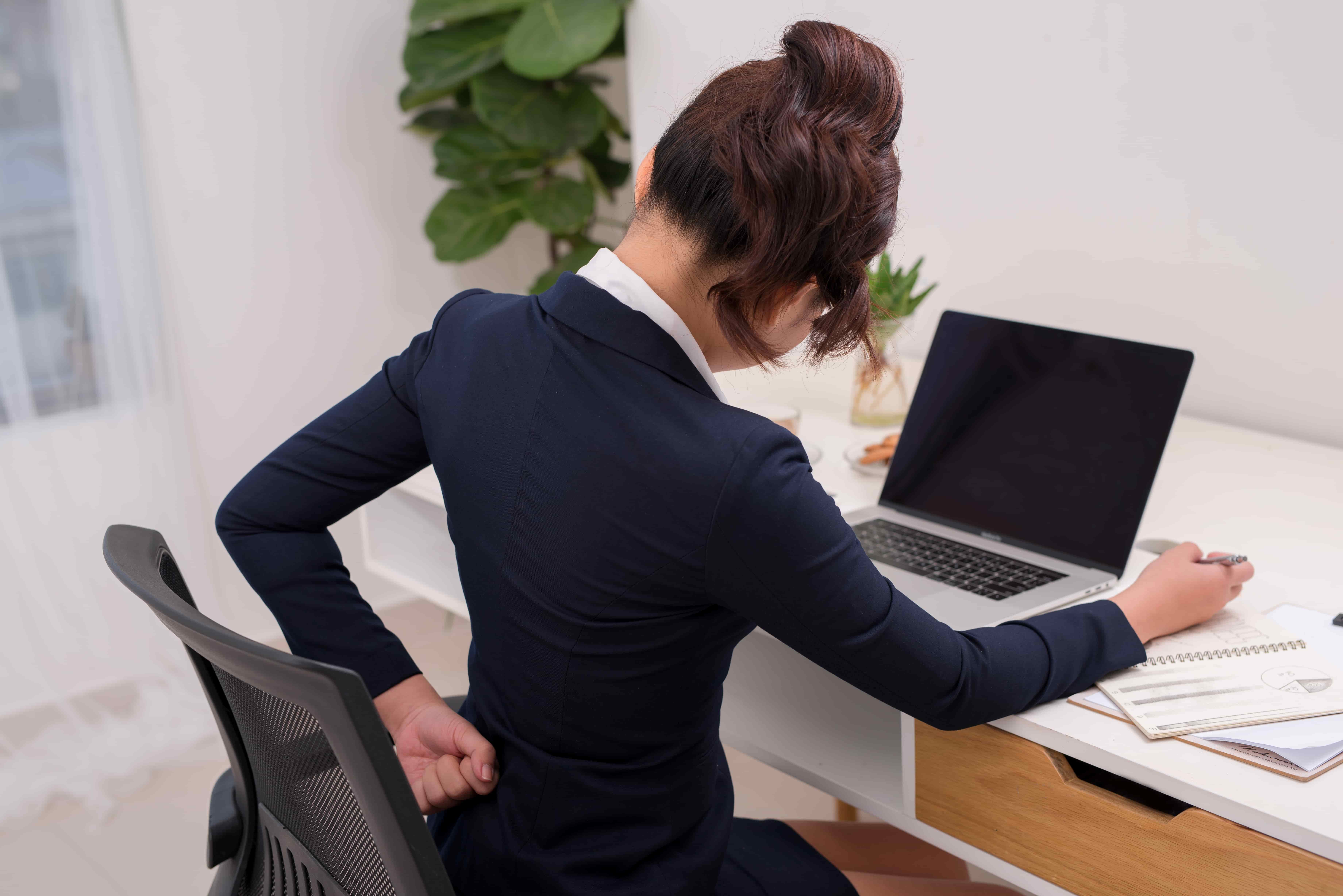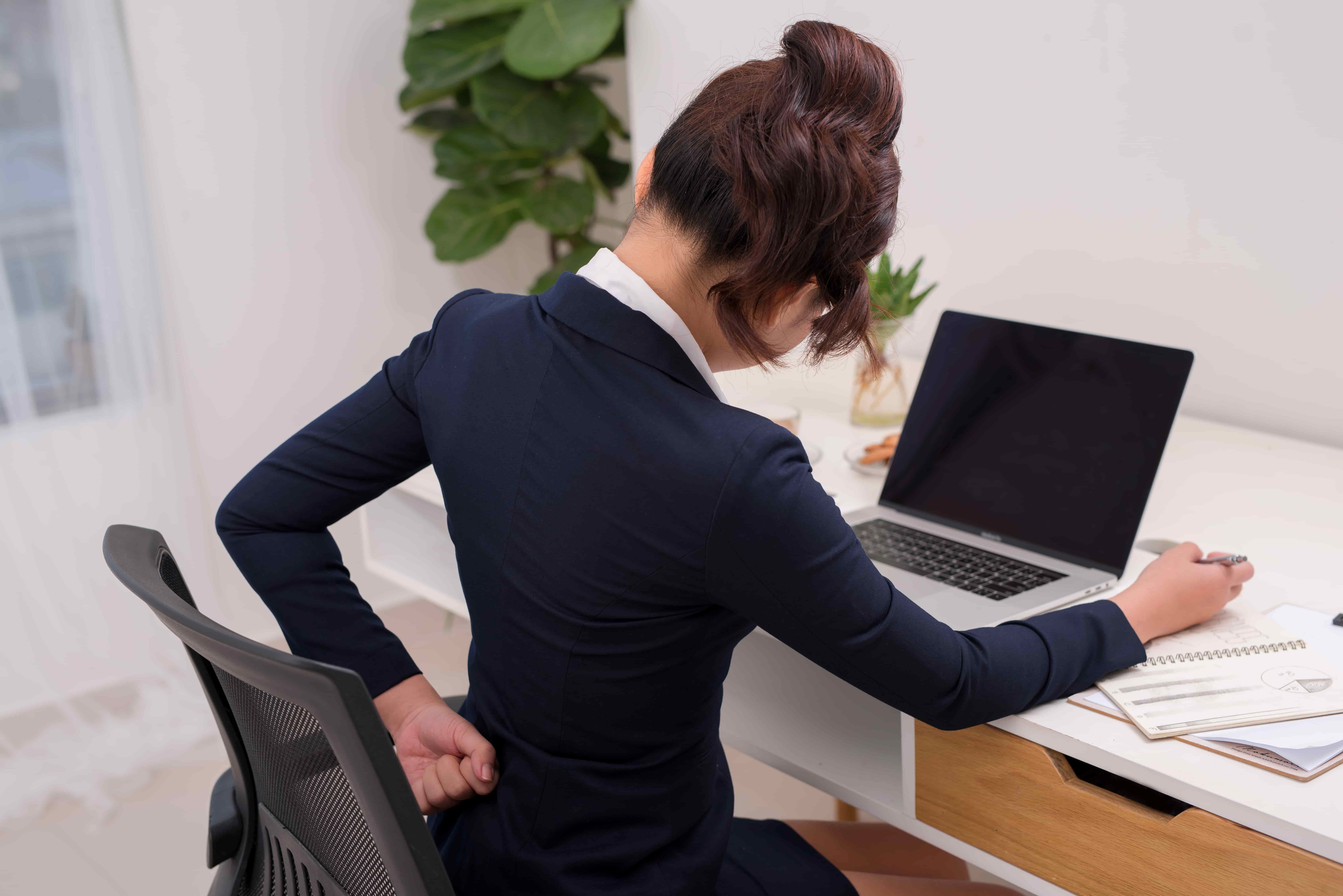
If you've ever found yourself wincing in discomfort due to lower back pain while sitting, you're not alone. Many individuals grapple with this common health issue, especially those whose work involves long periods of sedentary behavior. A crucial factor influencing this discomfort is your sitting posture. It's essential to identify how to sit with low back pain in order to maintain overall spinal health and avoid aggravating any existing conditions.
Our lower backs bear the brunt of our body weight when we sit, and an improper posture can significantly strain this region. The common causes of lower back pain include muscle or ligament strain, disc herniations, and conditions such as osteoarthritis. However, by paying attention to how we sit, we can alleviate a lot of this discomfort and, in many cases, even prevent it. In this guide, we'll delve into the importance of finding the best sitting positions for lower back pain and how to adopt them effectively.
Understanding Lower Back Pain: 101 Guide
The anatomy of the lower back, or lumbar region, is complex and consists of several interconnected and overlapping structures. It is primarily composed of five vertebrae, known as L1 to L5. These vertebrae support much of the weight of the upper body and are the largest of the spinal column. They are separated by intervertebral discs, which act as shock absorbers during activities such as walking or lifting.
Numerous muscles, ligaments, and nerves within this structure work in unison to provide strength, flexibility, and sensation. The lower back also houses the beginning of the sciatic nerve, which extends to the legs. Any strain or injury in this region can cause symptoms that extend beyond the back.
Common conditions leading to lower back pain typically involve some disruption of this complex structure. They include:
- Muscle or Ligament Strains: The most common causes of lower back pain, typically resulting from heavy lifting or sudden awkward movements.
- Lumbar Disc Herniations: This condition occurs when the soft material inside a disc protrudes through a tear in the disc's exterior, irritating nearby nerves and leading to pain that can extend to the hips or legs.
- Osteoarthritis: This degenerative joint disease can affect the lower back, leading to stiffness and pain. It happens when the protective cartilage that cushions the ends of the bones wears down over time.
- Spinal Stenosis: This condition, where the spinal canal narrows and compresses the nerves, can cause lower back pain and even leg pain when walking.
By understanding these conditions, we can better appreciate the importance of finding the best position to sit for lower back pain, highlighting the role of good posture and ergonomic practices while sitting.


Ergonomics and Lower Back Pain
Understanding the science of fitting your work environment to you—otherwise known as ergonomics—is instrumental in both preventing and alleviating lower back pain. The discipline emphasizes designing and arranging the workspace to cater to the user's needs, fostering improved postures, and reducing the risk of back strain and associated injuries.
When it comes to finding the best position to sit for lower back pain, a crucial aspect is choosing the right chair. An ergonomic chair provides the necessary support for the natural curve of your spine and encourages a better sitting posture. Ideally, it should have an adjustable seat height, a deep seat depth, sufficient lumbar support, and armrests at the right height.
A well-organized workspace can also significantly affect your sitting position and, subsequently, the stress on your lower back. You'll find 15 tips on how to organize your office desk beneficial for achieving this goal. It's also crucial to be aware of potential ergonomic hazards in your workspace and to take appropriate measures to mitigate them.
By applying ergonomic principles, you can dramatically reduce the pressure on your lower back while sitting and effectively alleviate the discomfort associated with lower back pain. Remember, the key lies in creating a balance between support, comfort, and functionality to maintain a healthy back.
Finding the Best Position to Sit For Lower Back Pain


1. Neutral Sitting Position
A neutral spine alignment is crucial to find the best position to sit for lower back pain. This alignment eases strain on the back by distributing the body weight evenly across the back structures. Here's how to achieve a neutral sitting position:
- Place feet flat on the ground, with knees at a 90-degree angle.
- Rest your back against the chair's backrest, maintaining your lower back's curve.
- Keep your shoulders relaxed and your arms in a comfortable position on the desk or armrest.
- Your screen should be at eye level to avoid neck strain.
Alternating between different neutral sitting positions can alleviate back pain. These include:
- Reclined Sitting: This posture is characterized by a backward-angled trunk, which reduces back muscle activity and fatigue.
- Declined Sitting: With a forward-angled trunk, this position can reduce low back fatigue by maintaining the lumbar curve.
- Standing: Periodic standing can effectively ease the load on your spine and improve blood circulation. A study showed alternating between sitting and standing helped decrease lower back and neck pain by up to 54% in participants.
- Supine Sitting: Involves laying near-horizontal as you work, placing the least pressure on spinal discs.
Remember, the idea here is not to stick to one position but to rotate between them, giving your back and legs a break and relieving lower back pain from sitting. Find out which positions work best for you and integrate them into your routine. You'll soon notice a significant difference in your comfort levels and how to sit when you throw your back out.
